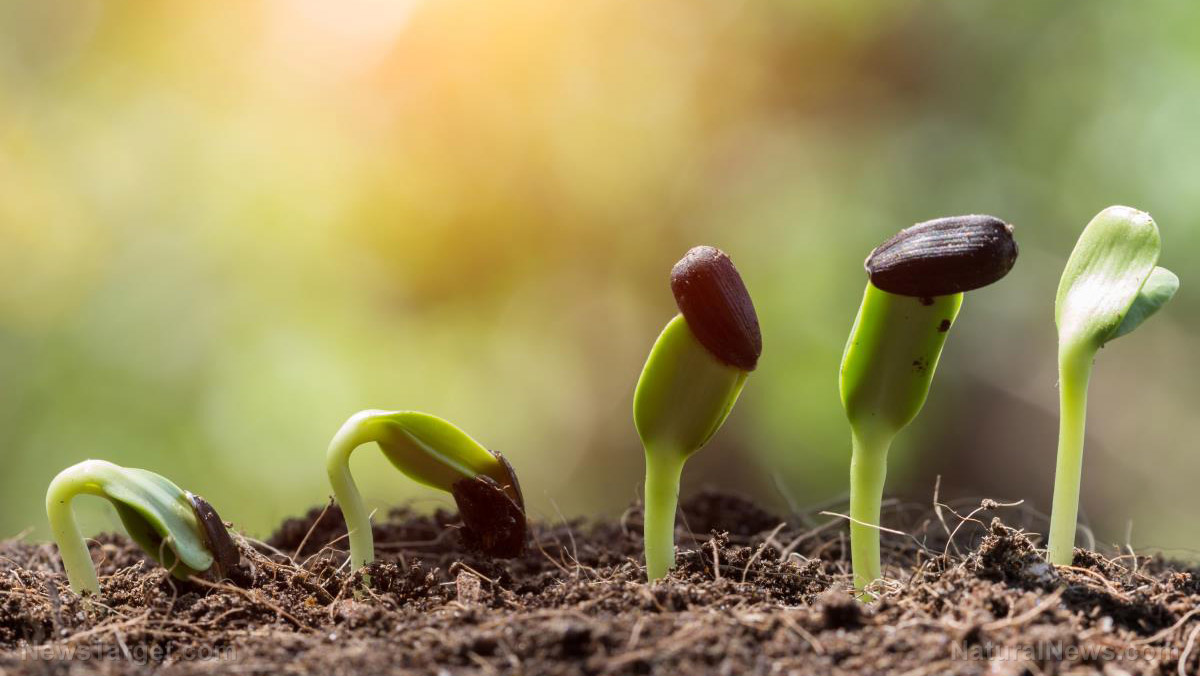
The University of Aberdeen (Aberdeen) research team took a close look at the rhizosphere, the soil around the roots of a plant. This underground zone is where the important processes that power the production of crops take place.
The rhizosphere is where plants synthesize many exudates that provide beneficial effects on the plant and the soil community. These chemical compounds change the properties of the soil particles immediately next to the roots. The researchers took very fine measurements of this special exudate-affected soil near the roots.
Study author Paul Hallet explained that the roots are always releasing exudates into the soil in order to collect the nutrients carried by those particles. In humans, the equivalent is the stomach releasing gastric juices that digest food. (Related: New soil science study shows how plants release specific metabolites that enrich productivity.)
Exudates serve as digestive juices for plants, food for microbes, and glue for soil particles
Hallett went on to say that exudates are made up of all kinds of chemicals that act as a buffet of resources for microorganisms in the rhizosphere. Not only did these compounds digest nutrients for plants, they also served as energy sources for the microbes in the soil.
Like roots and fungi, exudates help hold the soil together. While the bigger organisms kept the clumps of soil together, exudates served as the glue that combined microscopic particles into "soil networks aggregates."
Roots and fungal networks bind soil together over long periods of time. Exudates, on the other hand, do not last for long because their energy-rich nature draws attention from microorganisms.
Hallett explained that exudates are quickly consumed by microbes. But that's a good thing, as they get transformed into different chemicals that work even better when it comes to holding together soil particles.
"Plant root exudates have a massive impact on aggregate formation," said Hallet. He explained that they accomplish this in many ways, such as the aforementioned glue effect or altering the rate at which the rhizosphere gets wet or dries up depending on the amount of rain and rate of evaporation.
Corn exudates glue together soil particles better than barley equivalents
The Aberdeen research team compared the effects of exudates on two different kinds of soil. They discovered that the chemical compounds undergo different reactions with soil particles from sandy loam versus those from clay loam.
They also studied the different kinds of exudates secreted by barley and corn. They reported that exudates from both plants were both able to bind soil particles together, but the ones produced by corn were better at it. Furthermore, barley exudates didn't affect the water-repellent properties of soil. Corn exudates, on the other hand, increased the repellent effect and kept soil drier.
Hallett's findings proved the existence of a mutual relationship between the plant and the soil that surrounds its roots. The exudates that power their interaction demonstrated numerous beneficial effects.
Hallett and his colleagues are planning to investigate the production of exudates along the roots of a plant. They also intend to find out if the age of the roots affects the compounds they produce. It could be that younger roots secrete different types of exudates, which in turn would have different properties.
Fascinated by the interactions between plants and soil? You can learn more about this and other factors that affect crop growth at Ecology.news.
Sources include:
Please contact us for more information.























